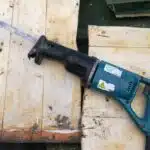Glass cutting is a delicate and intricate process that requires precision, skill and patience. Whether you are a professional glass cutter or a DIY enthusiast, mastering this art is crucial to achieving the desired results for any project involving glass material. Cutting glass can be intimidating, but with the right tools, techniques and practice, anyone can achieve clean cuts and create beautiful designs.
As an experienced glass cutting expert, I have seen many individuals struggle with this process due to lack of knowledge or improper techniques. In this article, I will share my insights and expertise on how to cut glass efficiently and effectively. Whether you are working on stained glass projects or simply need to cut a piece of glass for a window replacement, this guide will provide you with valuable tips and tricks that will help you achieve precise cuts every time.
Understanding Glass Cutting Tools
When it comes to cutting glass, there are several tools available in the market. Each tool has its own unique features and is designed for a specific purpose. Comparing effectiveness, the most popular glass cutting tool is the glass cutter. It consists of a small wheel attached to a handle, which is used to score the glass surface before breaking it into pieces.
Cost analysis is another important factor to consider when choosing a glass cutting tool. While there are several other tools available such as tile cutters or diamond saws, they can be quite expensive and may not be suitable for small-scale projects. Glass cutters, on the other hand, are relatively inexpensive and easily accessible.
When using a glass cutter, it’s important to remember that different types of glass require different techniques. Choosing the right type of glass for your project can save you time and effort while also ensuring that you achieve your desired results. In the next section, we will discuss how to choose the right type of glass for your project and provide tips on how to ensure that you get the best results possible.
Choosing The Right Glass For Your Project
Different types of glass have varying properties that make them suitable for different uses. For instance, tempered glass is four times stronger than regular glass and can withstand high temperatures, making it ideal for kitchen cookware and oven doors. On the other hand, laminated glass has a layer of plastic sandwiched between two layers of glass, which makes it shatterproof and therefore suitable for use in car windshields. Float glass is another common type of glass used in architecture due to its transparency and ability to transmit light.
When choosing the right glass for your project, there are several factors to consider. The first factor is the purpose of the glass – will it be used as a decorative or functional element? Secondly, think about the environment where the glass will be installed; will it be exposed to high heat or moisture? Thirdly, consider the thickness of the glass; thicker glasses are generally stronger but weigh more than thinner glasses.
It’s essential to choose the right type of glass for your project to ensure durability and safety. By considering factors such as purpose, environment, and thickness, you’ll be able to make an informed decision about which type of glass best suits your needs. In our next section, we’ll discuss safety precautions that should be taken when handling different types of glasses during cutting.
Safety Precautions For Glass Cutting
Understanding glass hazards is crucial when it comes to cutting glass. Glass is a fragile material that can shatter easily, causing lacerations and other injuries. It is essential to recognize the risks associated with handling glass and take appropriate safety measures to avoid accidents.
To ensure your safety while cutting glass, wearing essential safety gear is a must. Some of the most important items include gloves, eye protection, and a dust mask. Gloves provide protection against cuts and prevent skin irritation from contact with chemicals or sharp edges. Eye protection shields your eyes from flying debris, while a dust mask prevents inhalation of hazardous particles generated during the cutting process.
Taking adequate safety precautions is vital before starting any glass cutting project. By doing so, you can minimize the risks associated with handling such delicate materials and avoid potential accidents or injuries. With proper understanding of glass hazards and appropriate safety gear, you can safely cut glass without any worries about your well-being.
As we move forward with our discussion on how to cut glass, it’s vital that we discuss how to prepare your work area adequately. Preparing your work area involves creating an environment that promotes safety by removing potential hazards in your surroundings. By doing so, you can reduce the likelihood of accidents occurring while also ensuring optimal results for your project.
Preparing Your Work Area
- Gathering the necessary supplies for cutting glass is essential; safety glasses, cutting tools, and a measuring and marking device should be collected.
- Creating a dedicated space for glass cutting is important; having an area that can be easily cleaned and ventilated is necessary.
- To protect the surfaces of the work area, a piece of plywood or other appropriate material can be used to provide a smooth, flat surface for cutting.
- Wherever possible, it is advisable to use a self-healing cutting mat to protect the surface below the glass.
- It is important to use a metal straight edge or a metal ruler when cutting glass, as it will prevent the glass from chipping.
- Additionally, the use of a damp cloth or sponge to clean the glass while cutting can help minimize dust and reduce the risk of injury.
Gathering Supplies
To begin preparing your work area for glass cutting, gathering supplies is an essential step. It is crucial to have all the necessary tools and materials on hand before starting any project. Knowing where to buy these supplies and their cost can help in budgeting for your projects.
When it comes to purchasing glass cutting supplies, there are various options available. Local craft stores or home improvement stores often carry basic glass-cutting tools such as cutters and blades. Online retailers also offer a vast array of glass-cutting tools and accessories, including safety glasses, rulers, and cutting oils. Comparing prices across different outlets can help you find the best deal on your necessary supplies.
The cost of glass cutting supplies can vary depending on the type of project you are working on. Basic tools such as cutters and blades typically range from $5-20. More advanced equipment like diamond-tipped drill bits or specialized scoring wheels can be more expensive. However, investing in high-quality tools can save money in the long run by reducing waste and producing higher-quality results. Remember that having the proper supplies is crucial in achieving success when it comes to cutting glass.
Creating Space
As a glass cutting expert, maximizing efficiency and minimizing waste are two important factors to consider when preparing your work area. One way to achieve this is by creating space that is conducive to your glass cutting needs. Having enough room to move around and work comfortably can help you focus on the task at hand without feeling cramped or cluttered.
To create an optimal workspace, start by designating a specific area for your glass cutting activities. This can be a spare room, garage, or even just a corner of your home where you have ample space to work. Once you have identified the location, clear out any unnecessary items and organize your tools and materials in a way that makes them easily accessible.
Additionally, consider investing in storage solutions such as shelves or cabinets to keep your supplies organized and within reach. By creating a well-organized workspace with plenty of space to move around, you can maximize efficiency while minimizing wasted time searching for tools or clearing clutter from your work area. Remember that every second counts when it comes to glass cutting, so take the time to create an efficient workspace that supports your projects.
Protecting Surfaces
Creating an efficient workspace for glass cutting involves more than just having enough room to move around. Another important factor to consider is protecting surfaces from damage during the cutting process. This not only ensures that your workspace remains clean and organized, but it also helps prevent accidental damage to your tools or materials.
A simple way to protect surfaces is by covering them with protective materials such as felt or cardboard. These materials can be easily cut and placed underneath the glass, providing a soft cushion that absorbs any impact from the cutting process. Additionally, using a cutting mat or board can also help protect surfaces from scratches and other types of damage.
It’s important to remember that protecting surfaces goes beyond just the area where you will be working on your glass project. Make sure to cover any nearby furniture or flooring that could potentially be damaged by flying glass shards or accidental spills. By taking these extra precautions, you can ensure that your workspace remains safe and protected while maximizing efficiency during the glass cutting process.
Measuring And Marking Your Glass
As the adage goes, “measure twice, cut once.” This is especially true when it comes to cutting glass. Accurate measuring and marking of your glass will ensure that you get the precise cut that you need.
To begin, use a ruler or tape measure to measure the dimensions of the glass that you need. Use a marker to make marks on the glass where you will be cutting. It’s important to make sure that your marks are straight and even, so take your time in measuring and marking.
When making cuts on your glass, it’s important to consider the angle at which you will be cutting. Glass cutting angles can affect the precision of your cut. As an expert in glass cutting techniques, I recommend using a 45-degree angle for most cuts. This ensures that the cut is clean and accurate.
- Bullet Points:
- Use a ruler or tape measure for accurate measurements
- Take your time in making straight and even marks on the glass
- Consider using a 45-degree angle for precision cutting
- Keep your workspace clean and free from debris for optimal results
With these precision cutting techniques in mind, you can confidently move onto choosing your cutting technique. But first, it’s important to make sure that your measurements and markings are accurate before proceeding with any further steps.
Choosing Your Cutting Technique
- Diamond cutting is a popular technique for cutting glass due to its precision and accuracy.
- Water jet cutting utilizes a high-pressure stream of water to cut glass, allowing for intricate and complex shapes.
- When selecting a cutting technique, the type of glass must be taken into consideration, as certain techniques are more suitable for certain types of glass.
- Diamond cutting is effective for cutting thick pieces of glass, while water jet cutting is better suited for intricate and complex shapes.
Diamond Cutting
When it comes to cutting glass, diamond cutting is a technique that stands out due to its efficiency and precision. Diamond cutting techniques involve the use of advanced diamond cutting tools that have been designed specifically for glass. These tools are made up of tiny diamond particles that allow them to cut through even the toughest types of glass with ease.
One of the most significant advantages of diamond cutting is its ability to produce clean and precise cuts without shattering or damaging the glass. This technique can be used to create intricate designs on a variety of surfaces, including mirrors, windows, and vases. Additionally, diamond cutting tools are highly durable and long-lasting, making them an excellent investment for anyone looking to cut glass regularly.
Overall, if you’re looking for a reliable and efficient way to cut glass, then diamond cutting is an excellent choice. With advanced diamond cutting tools at your disposal, you’ll be able to achieve precise cuts quickly and easily while minimizing any potential damage or breakage. By choosing this technique, you’ll be able to take your glass-cutting skills to the next level and create beautiful works of art that will last for years to come.
Water Jet Cutting
Another cutting technique that is gaining popularity in the glass industry is water jet cutting. This method involves using a high-pressure stream of water mixed with abrasive particles to cut through various types of materials, including glass. Water jet cutting offers several benefits, including its ability to produce complex shapes and designs with minimal waste material. Additionally, this technique can be used on a wide range of glass thicknesses, making it suitable for both thick and thin glass sheets.
One significant advantage of water jet cutting is its cost-effectiveness compared to other traditional methods like diamond cutting. While diamond cutting tools require regular maintenance and replacement, water jet machines have minimal upkeep costs and can operate continuously without downtime. Furthermore, water jet cutting eliminates the need for secondary finishing processes due to its precise cuts, reducing overall production time and expenses.
When deciding between diamond or water jet cutting techniques for your glass-cutting needs, it’s essential to consider your specific requirements. While diamond cutting may be more suitable for intricate designs on smaller surfaces, water jet cutting can handle larger projects efficiently while producing precise cuts. By comparing the benefits and costs of each technique, you’ll be able to make an informed decision that meets your needs while maximizing your investment in glass-cutting technology.
Straight Line Cutting
Cutting a straight line on glass may seem like a simple task, but it requires precision and careful technique. To ensure a successful cut, start by measuring the glass and marking the line you wish to cut with a marker or pencil. Next, score the line using a glass cutter while applying even pressure. It is important to only score the glass once to prevent cracking.
Once the glass is scored, it can be separated into two pieces by gently tapping along the scored line with a breaking pliers or running pliers. You can also use advanced techniques such as cutting angles to create more intricate designs. When cutting angles, make sure to score each line separately and break the sections apart carefully.
Incorporating cutting angles into your work can bring new dimensions of creativity to your glass projects. However, it is important to remember that mastering straight line cutting before moving onto advanced techniques is crucial for success in glass cutting. In the next section, we will explore curved cutting techniques that will further expand your skills and abilities in working with glass.
Curved Cutting Techniques
After mastering precision in straight line cutting, it’s time to move on to more complex shapes. Cutting curved glass requires a different set of techniques and skills that are essential for creating custom designs. As an expert in glass cutting, I recommend the following techniques for achieving perfect curves.
Firstly, it’s crucial to have the right tools. A diamond blade or a carbide wheel cutter can be used depending on the thickness of the glass. A circle cutter can also come in handy when cutting circles or arcs. Secondly, scoring is key to creating precise curves. Start by scoring the glass along the curve using steady pressure while keeping the cutter perpendicular to the surface of the glass. Then, apply slight pressure along one side of the scoreline while tapping gently on the other side until the glass breaks along the curve.
When it comes to cutting complex shapes such as ovals or hearts, there are additional techniques that must be employed. Using templates made from cardboard or paper can help ensure accuracy and consistency in shape and size. Another technique is to use a wet saw with a diamond blade which allows for more intricate cuts and reduces chipping. By combining these techniques with patience and practice, anyone can become skilled at cutting even the most complex shapes with ease.
Now that we’ve covered basic curved cutting techniques, let’s explore how to cut even more intricate shapes with precision and ease.
Cutting Complex Shapes
Cutting complex shapes in glass requires a great deal of skill and precision. It is not uncommon for professionals to use templates when cutting intricate designs, especially for projects that require multiple pieces to be cut to the same shape. Templates can be made from various materials, such as paper or cardboard, and are typically placed on top of the glass before being traced with a marker or etching tool.
Once the template has been traced onto the glass, it is important to select the appropriate cutting tool for the job. Depending on the thickness and type of glass being used, different tools may be required. For example, a diamond-tipped cutter is often used for thicker glass while a carbide wheel cutter may be better suited for thinner glass. The cutting tool should always be held at a 90-degree angle to the surface of the glass to ensure a clean and straight cut.
When cutting complex shapes in glass, it is important to take your time and work slowly and deliberately. Rushing through the process can result in mistakes or uneven cuts that may compromise the overall quality of your project. With practice and patience, however, anyone can learn to cut intricate designs in glass using templates and proper cutting techniques.
Moving onto dealing with nicks and chips in your finished piece, there are several options available depending on the severity of the damage. With minor nicks or scratches, polishing compounds can often be used to buff out any imperfections. For larger chips or cracks, however, more extensive repairs may be necessary. It is important to consult with a professional if you are unsure about how best to repair damage to your glass piece.
Dealing With Nicks And Chips
Cutting complex shapes requires skillful techniques and precise tools to create intricate designs. However, even the most experienced glass cutters encounter nicks and chips in their work. In fact, according to a recent survey conducted by Glass Magazine, over 60% of glass cutting professionals have faced issues with chips and cracks during their career.
To ensure that your glass projects maintain their quality, it is crucial to know how to repair any nicks or chips that may arise. One method is to use a diamond file or sandpaper to smooth out the rough edges of the damaged area. It is important to apply gentle pressure and work slowly to avoid causing further damage. Additionally, applying a small amount of clear nail polish or epoxy resin can help prevent future damage.
Prevention is key when it comes to maintaining the integrity of your glass projects. To reduce the risk of nicks and chips, consider investing in proper protective equipment such as gloves and safety goggles. Additionally, using high-quality tools such as diamond-tipped cutters can make all the difference in preventing future damage.
Incorporating these preventative measures into your glass cutting routine can save time and money in the long run by reducing the need for repairs and replacements. However, if you do encounter any nicks or chips, don’t panic! With patience, precision, and a few simple techniques under your belt, you can easily repair any damage and keep your glass projects looking pristine for years to come. Next up: smoothing rough edges for a flawless finish.
Smoothing Rough Edges
Once you have successfully cut your glass, it is time to move on to the next step: smoothing rough edges. Sandpaper can be used to smooth out any rough or jagged edges on your glass. Ensure that you use a fine-grit sandpaper and work slowly and carefully to avoid damaging the glass. Start with a lower grit number, such as 220 or 320, and gradually work up to higher grits for a smoother finish.
In addition to sandpaper, polishing compound can also be used for smoothing rough edges. Apply a small amount of polishing compound onto a soft cloth and gently rub it on the rough area until it becomes smooth. This process may take some time but will result in a polished edge that is free of scratches or nicks.
For those looking for decorative edges, flame polishing or acid etching can be used for an added touch of elegance. Flame polishing involves heating the edge of the glass with a torch until it melts and forms a smooth surface. Acid etching uses chemicals to dissolve portions of the glass surface, creating intricate designs and patterns.
Transition:
Now that your glass has been cut and smoothed out, it is time to ensure that it is clean and ready for use. Cleaning up your glass is an essential step in the cutting process as it ensures its longevity and durability.
Cleaning Up Your Glass
- Removing scratches from glass surfaces requires a specific type of abrasive material and a method of application to ensure that the scratches are buffed away without further damaging the glass.
- To prevent glass breakage, it is important to use cutting tools that are designed for glass specifically, as well as to ensure that the glass is supported properly during the cutting process.
- Additionally, it is essential to use the correct type of oil when cutting glass to reduce the risk of the glass cracking or shattering.
- Finally, it is important to take the time to measure and mark the glass before cutting, to ensure that the cuts are accurate and that the glass is not damaged in the process.
Removing Scratches
Glass scratch removal is a crucial aspect of cleaning up your glass. Whether you are dealing with minor or major scratches, it can be frustrating to see them marring the beauty of your glass surface. However, with the right polishing techniques, you can restore your glass to its original luster and shine.
When it comes to glass scratch removal, one effective method is using cerium oxide. This polishing compound works by removing a very fine layer of glass from the surface, which helps to eliminate any visible scratches. To use this technique, you will need a polishing pad and a small amount of cerium oxide mixed in water. Apply the mixture onto the pad and buff the scratched area in circular motions until the scratches disappear.
Another helpful technique for removing scratches from glass is using baking soda. Mix baking soda with water until it forms a paste-like consistency, then apply it onto the scratched area using a soft cloth. Rub gently in circular motions until the scratches fade away. You may need to repeat this process several times for deeper scratches.
In conclusion, removing scratches from your glass surfaces doesn’t have to be an overwhelming task. By utilizing effective polishing techniques such as cerium oxide or baking soda paste, you can restore your glass to its former glory without having to replace it entirely. Remember that prevention is always better than cure – avoid scratching your glass by taking proper care of it and handling it with care at all times.
Preventing Breakage
Optimizing cutting precision is crucial in preventing breakage when working with glass. Common mistakes that lead to breakage include applying too much pressure, using dull blades, and incorrect positioning of the glass. To avoid these pitfalls, it’s essential to use sharp blades and position the glass properly before cutting.
Troubleshooting techniques can also help prevent breakage when working with glass. For instance, if you notice that the glass is not breaking as intended, try adjusting the blade angle or reducing the amount of pressure applied. Additionally, checking for any cracks or chips before you begin cutting can also prevent further breakage.
Advanced techniques such as using a diamond blade or a water jet cutter can further improve your precision and minimize the risk of breakage when working with fragile materials like glass. By incorporating these techniques into your practice, you’ll be able to handle even delicate projects with ease and confidence. Remember that prevention is always better than cure – take care to optimize your cutting precision and utilize advanced techniques to prevent breakage when working with glass.
Proper Storage And Handling Of Glass
Glass storage and handling are crucial aspects of working with glass. Proper storage and handling techniques ensure that the glass remains in good condition, free from scratches, chips, or cracks. Glass should be stored vertically in racks that are specially designed for storing glass sheets. This prevents the sheets from sliding or rubbing against each other, which can cause damage to the edges and surfaces of the glass.
When handling glass, it is important to wear protective gloves to prevent cuts or injuries. The gloves should be made of a material that does not leave any residue on the surface of the glass. Glass sheets should always be lifted using suction cups or clamps to avoid putting pressure on any one part of the sheet. This helps prevent cracking or breaking during handling.
Glass cutting can sometimes lead to problems such as chipping, cracking, or uneven cuts. Most of these issues can be avoided by using proper cutting techniques and by ensuring that the glass is stored and handled correctly. However, in some cases, troubleshooting may be necessary to fix these problems. In the following section, we will discuss common issues faced during glass cutting and how to resolve them effectively without causing further damage to the glass sheets.
Troubleshooting Common Glass Cutting Problems
Proper storage and handling of glass is crucial to prevent any damage that could cause cracks or breaks during cutting. Even the smallest chip or scratch on the surface can lead to a catastrophic failure while cutting. As a glass cutting expert, I cannot stress enough how important it is to handle glass with care.
To prevent glass cracking during cutting, there are several tips that you should keep in mind. Firstly, make sure that your cutting wheel is sharp and clean. A dull or dirty wheel can cause unwanted vibrations and scratches on the surface of the glass, which can lead to cracks. Secondly, use a lubricant such as oil or water to cool the cutting wheel and reduce friction between the blade and the glass. Lastly, always use firm and consistent pressure when scoring the glass to ensure an even score line.
If you encounter any issues while cutting glass, troubleshooting glass breakage should be your top priority. One common problem is when the glass breaks or cracks along the score line instead of separating cleanly. This could be due to several reasons such as uneven pressure during scoring or using a dull blade. To solve this issue, try scoring again with more even pressure or replace your cutting wheel with a fresh one.
Taking your glass cutting skills to the next level requires practice and patience. By following these tips for preventing glass cracking during cutting and troubleshooting common problems, you will become more confident in your abilities as a glass cutter. Remember to always handle glass with care and take your time to achieve clean cuts every time.
Taking Your Glass Cutting Skills To The Next Level
Advanced techniques in glass cutting can take your skills to the next level and help you achieve more intricate designs. One such technique is coldworking, which involves shaping and polishing the edges of the glass after it has been cut. This can be done using a variety of tools, such as diamond hand pads or sandpaper. Coldworking allows for greater precision and control over the final product, resulting in a smoother and more professional finish.
Another advanced technique is scoring with a pattern. Instead of cutting straight lines, a patterned score can add depth and texture to your work. This requires a specially designed cutter that allows you to create custom patterns on the surface of the glass. By incorporating this technique into your work, you can create stunning pieces that are truly unique.
Creative applications for glass cutting are endless. For example, you can use glass cutting techniques to make personalized gifts for friends and family, such as engraved wine glasses or decorative vases. You can also use glass cutting as part of larger art projects or installations, creating intricate designs that inspire and delight viewers.
By mastering advanced techniques and exploring creative applications for glass cutting, you can take your skills to new heights. Whether you’re looking to improve your existing craft or branch out into new areas of creativity, there’s always more to discover in the world of glass cutting. So why not try something new today? You never know what amazing creations might be waiting just around the corner!
Conclusion
Glass cutting is an essential skill for any DIY enthusiast or professional who wishes to create stunning glass pieces. The key to mastering this skill is to understand the tools, choose the right glass, and follow safety precautions while working. Measuring and marking your glass accurately is also crucial in achieving precision cuts. Proper storage and handling of glass will ensure its longevity.
However, a common objection faced by beginners is that glass cutting can be challenging, and mistakes are often costly. While it may take some practice to perfect the technique, it is achievable with patience and dedication. It’s important to remember that every mistake is an opportunity to learn and improve your skills. With time, you’ll become more confident in your abilities and will be able to create beautiful glass pieces that showcase your creativity.
In conclusion, mastering the art of glass cutting requires knowledge of tools, safety precautions, and proper handling techniques. By following these guidelines, anyone can learn how to cut glass like an expert. Although it may seem intimidating at first, with practice and persistence it’s possible to overcome any challenges that arise along the way. Remember that learning from mistakes is part of the process, so don’t get discouraged if you encounter setbacks. Instead, use them as opportunities for growth and development on your journey towards becoming a skilled glass cutter.
Image Credits
- “CUT GLASS” by marc falardeau (featured)





























